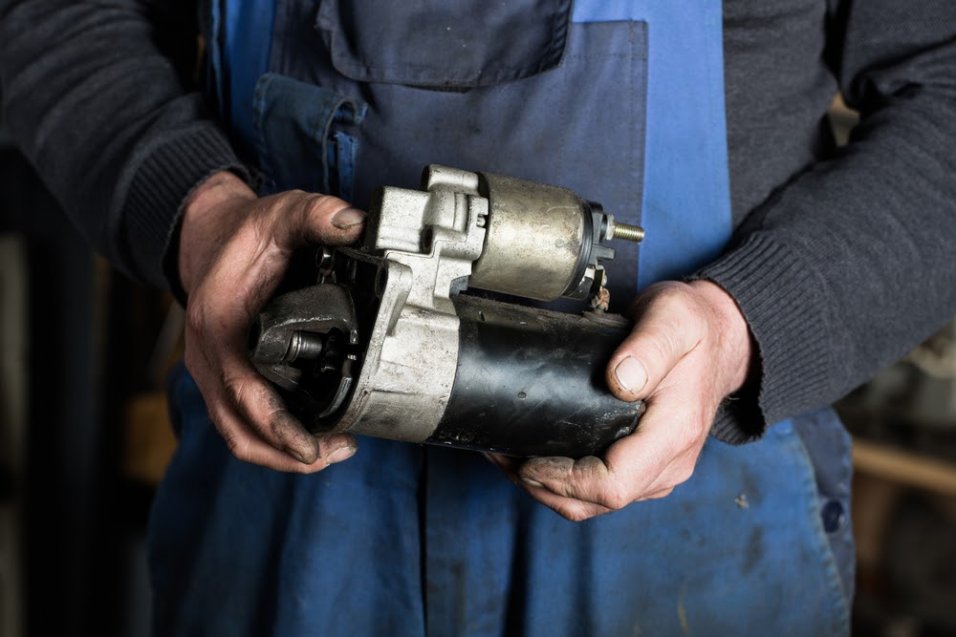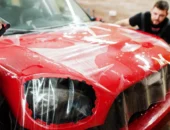A starter motor is an integral part of a vehicle, allowing it to start and run. However, many people are unaware of the intricate mechanics behind it.
This article will provide a comprehensive overview of the components and functionality of a starter motor, examining how they work together to power your engine.
We’ll look at the various parts that make up this vital system, from its electrical wiring to its rotating mechanism.
Finally, we’ll discuss how all these pieces interact with one another for your car engine to turn on correctly and efficiently each time you press the ignition switch. With this knowledge in hand, you can be sure that your vehicle is running smoothly every time!
Starter Motor Overview

Source: en.wikipedia.org
The starter motor is a complex system, but understanding its components and their roles can help to make sure that it works correctly each time you start your vehicle. This system relies on the electrical current from the battery to move certain parts of the starter motor for it to work properly.
The solenoid activates a plunger which moves two small pins called drive lugs against contact points known as commutators; this causes mechanical motion which initiates rotation of an armature shaft with gear teeth along its circumference.
Brushes, relays, contactors, resistors, and starter switch all play integral roles in making sure that electricity flows through these components when they engage with each other.
Additionally, some vehicles may include additional features like anti-theft systems or voltage regulators depending on their model specifications – these can further enhance safety measures and reduce the chances of potential damage caused by incorrect use or malfunctioning equipment.
All of these pieces must be inspected regularly for them to function optimally and keep your car running smoothly every time you turn on the ignition switch!
How a Starter Motor Works
Understanding how a starter motor works is essential for automotive mechanics. The starter motor is the primary source of power to start an engine and turn it over until it reaches operational speed.
To understand how a starter motor functions, one must first understand its components and functionality. The heart of every starter system is the electric motor itself which consists of two main parts: the armature and field coil assembly.
The armature spins around a shaft inside the solenoid when current flows through it; this generates torque which turns over the crankshaft in the engine block and allows fuel ignition. The field coils are responsible for producing magnetic fields that interact with each other when electricity passes between them, causing motion to occur in both directions as needed by the starting systems design requirements.
To control this process, there are several other components involved such as brushes, relays, contactors, resistors, and starters switches which all work together to ensure proper operation of the unit at any given time during startup or shutdown processes.
Additionally, some vehicles may include additional features like anti-theft systems or voltage regulators depending on their make and model specifications – these can further enhance safety measures and reduce the chances of potential damage caused by incorrect use or malfunctioning equipment.

Source: www.ymfcarparts.co.uk
Troubleshooting Common Issues
When it comes to troubleshooting common issues with starter motors, the first step is to identify the source of the problem. Is it due to a faulty part or improper installation? Once determined, further analysis can be done on what needs to be replaced or adjusted.
Some of the most common issues are bad connections, worn-out parts, and loose wiring. It’s important to inspect all components thoroughly before attempting any repairs.
Additionally, take note of any noise coming from the motor as this could indicate an issue that requires immediate attention. With proper maintenance and regular inspections, many problems can be prevented altogether but if repair is necessary then follow appropriate procedures to ensure safe operation.
Conclusion

Source: repairsmith.com
A starter motor is an essential component of any vehicle, and understanding its components and functionality will help you maintain it properly. The starter motor consists of a solenoid, a starter Bendix drive assembly, and an armature.
The solenoid activates the Bendix drive which then turns the armature allowing for starting the engine. Understanding how these parts interact with each other allows for proper maintenance of a motor starter, ensuring that your vehicle runs smoothly and safely.




